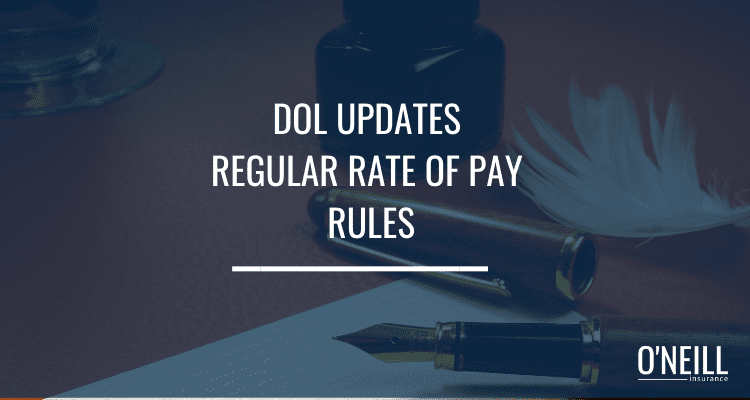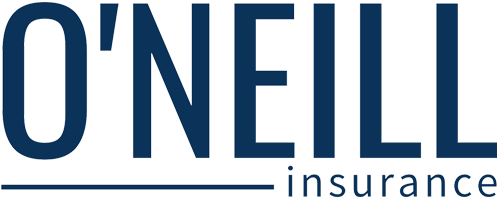
The U.S. Department of Labor (DOL), announced a new final rule regarding the Regular Rate of Pay that clarifies how to calculate an employee’s regular wage rate under the Fair Labor Standards Act (FLSA).
The final rule became effective on January 15, 2020.
Calculating the regular rate is an essential first step when determining an employee’s overtime compensation.
Under the FLSA, an employee’s regular rate includes all forms of compensation paid to that employee in a work week.
The final rule clarifies what qualifies as compensation.
The DOL’s stated objective with this rule is to provide more certainty for employers that offer additional perks to their employees but aren’t sure whether these benefits should be counted as income under the FLSA.
New Rule At A Glance
- The last updates to the regular rate calculation instructions were made over 60 years ago.
- The final rule accounts for newer forms of employee compensation and benefits.
- The final rule eliminates the “infrequent and sporadic” requirement to exclude call-back pay from the regular rate.
Current Regular Rate of Pay Calculation
The current regular rate calculation guidelines were last reviewed over 60 years ago.
The regular rate includes all of an employee’s remuneration for employment.
Calculating the regular rate requires employers to include the employee’s wages, commissions, bonuses, payments received in the form of goods (if the goods are intended to be part of the employee’s wages, such as room and board) and premium payments (excluding overtime) such as night shift pay differentials or incentive payments for hazardous, arduous or dirty work.
However, the following employment benefits and payments are excluded from the regular rate:
- Overtime pay;
- Extra pay provided for working on Saturdays, Sundays and holidays;
- Gifts (including holiday bonus, if the bonus is not based on hours worked or productivity)
- Paid time off, including compensation for sick days, vacation and holidays;
- Reimbursements issued by an employer to its employees (for example, business travel expenses);
- Discretionary bonuses; and,
- The employer’s cost of providing employee benefits such as health care coverage or life insurance.
New Regular Rate of Pay Calculation
The last updates made to the FLSA’s regular rate calculations were made in the 1950s.
In March 2019, the DOL issued a proposed rule to update the regular rate calculation to account for employment benefit practices that have evolved during the last 60 years.
For example, the DOL explains that in the 1950s, on average, fringe benefits accounted for only about 5 percent of a typical employee’s compensation.
In contrast, today’s estimate is that fringe benefits account for up to a third of an employee’s compensation.
In addition, employers now offer many new benefits, including fitness and nutrition classes, weight loss and smoking cessation programs, health risk assessments, and paid sick leave.
After considering public input, the DOL’s final rule clarifies that the following employee benefits can be excluded from the regular rate:
- The cost of certain parking benefits, wellness programs, onsite specialist treatment, gym access and fitness classes, employee discounts on retail goods and services, certain tuition benefits (whether paid to an employee, an education provider, or a student-loan program), and adoption assistance;
- Payments for unused paid leave, including paid sick leave or paid time off;
- Payments of certain penalties required under state and local scheduling laws;
- Reimbursed expenses including cellphone plans, credentialing exam fees, organization membership dues, and travel, even if not incurred “solely” for the employer’s benefit; (the rule clarifies that reimbursements that do not exceed the maximum travel reimbursement under the federal travel regulation system or the optional IRS substantiation amounts for travel expenses are per se “reasonable payments”);
- Certain sign-on bonuses and certain longevity bonuses;
- The cost of office coffee and snacks to employees as gifts;
- Discretionary bonuses (the rule clarifies that the label given a bonus does not determine whether it is discretionary); and,
- Contributions to benefit plans for accident, unemployment, legal services, or other events that could cause future financial hardship or expense.
Call-Back Pay
Call-back pay is typically provided to employees when they respond to their employee’s call to work hours beyond their regular shift.
Prior to the final rule, call-back pay could be excluded from the regular rate only if it was required to be “infrequent and sporadic.”
The new rule eliminates the infrequent and sporadic requirement, and allows employers to exclude call-back and other similar payments only when call-back hours are not prearranged or planned.
The DOL explains that the key to whether additional hours are prearranged is whether the extra work was anticipated and could have been reasonably scheduled.
Employer Takeaway
Employers should become familiar with this final rule and adjust their payroll practices to account for this new guidance on what should be considered compensation.

